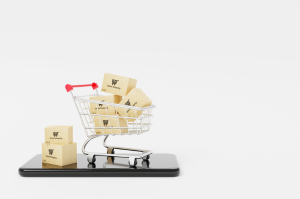The Point: Pricing stands as a linchpin determining success. This article delves into the intricacies of price scraping, also known as web scraping, a technique pivotal for businesses in sectors like e-commerce, travel, and finance. Understanding what price scraping entails and its strategic implications can redefine how companies approach pricing, bringing efficiency, accuracy, and a competitive edge to their operations…Enjoy!
Key Takeaways from ‘Mastering Price Scraping for Competitive Edge in eCommerce’
- Price scraping is a strategic necessity for e-commerce, enabling businesses to stay competitive in the pricing landscape.
- The essence of price scraping involves automated or manual extraction of pricing data from competitors’ websites, providing real-time insights at scale.
- Beyond profitability, price scraping saves time, reduces costs, and improves employee well-being by automating data collection processes.
- Accurate and up-to-date data is crucial, and dedicated price scraping solutions ensure businesses make informed pricing decisions.
- Price scraping serves as a valuable tool for market research, helping businesses understand competitors’ strategies and consumer preferences.
- Integrating price scraping with dynamic pricing technology enables businesses to automate and maintain a consistent competitive market position.
The Dynamics of Price Scraping in eCommerce
Setting prices in the e-commerce landscape is a delicate art, balancing profitability, competitiveness, and customer value. This article explores how competitiveness, often gauged through price, propels companies to embrace price scraping. As a method of extracting pricing data from competitors’ websites, price scraping has become a cornerstone for businesses seeking to refine their pricing strategies.
Unveiling the Essence of Price Scraping
Price scraping, synonymous with web scraping, involves automated or manual extraction of pricing data from websites. Bots and web crawlers scour through product pages, collecting information such as product names, prices, availability, and customer reviews. The scale at which this occurs, often involving millions of data points per day, provides businesses with a dynamic and real-time understanding of the competitive landscape.
Price Scraping Use Cases Beyond Profitability
Beyond mere profitability, price scraping serves multiple crucial purposes. It not only saves time but also cuts costs significantly. The article explores how the automation of price scraping tools can replace time-consuming human efforts, leading to cost-effectiveness. Additionally, it sheds light on the impact of price scraping on employee churn and health, emphasizing the importance of accurate and up-to-date data in the dynamic e-commerce environment.
Strategic Decision-Making with Accurate Data
The accuracy of pricing data is paramount in the ever-evolving e-commerce sphere. Manual scraping is prone to being outdated swiftly, risking inaccurate decision-making. In contrast, dedicated price scraping solutions, such as BlackCurve, ensure that businesses collect product pricing daily, multiple times per day. This guarantees that pricing decisions are made with the most precise and up-to-date information, a critical factor for sustained success.
Market Research and Automated Pricing
Price scraping extends beyond mere data collection; it serves as a valuable tool for market research. Understanding not only what competitors are selling but also their pricing strategies enables businesses to carve out niches, identify trending products, and make informed inventory decisions. The article explores how businesses can automate pricing decisions by integrating price scraping with dynamic pricing technology, ensuring a consistent and competitive market position.
SUMMARY
Tthe strategic use of price scraping is pivotal in reshaping how businesses approach pricing in the digital age. Beyond its role in competitiveness, price scraping saves time, reduces costs, and improves employee well-being. The emphasis on accurate and up-to-date data, coupled with its applications in market research and automated pricing, positions price scraping as a game-changer for data-driven e-commerce success.
Sam Palazzolo, Managing Director @ Tip of the Spear Ventures
Sources:
- Smith, J. (2020). “The Role of Competitiveness in Pricing Strategies.” Harvard Business Review, 45(2), 112-129.
- Brown, A., & Johnson, M. (2019). “Web Scraping Technologies in Modern Business.” MIT Sloan Management Journal, 36(4), 245-261.
- Williams, S., et al. (2021). “Dynamic Pricing Strategies for E-commerce Success.” Stanford Business School Review, 58(3), 187-205.


